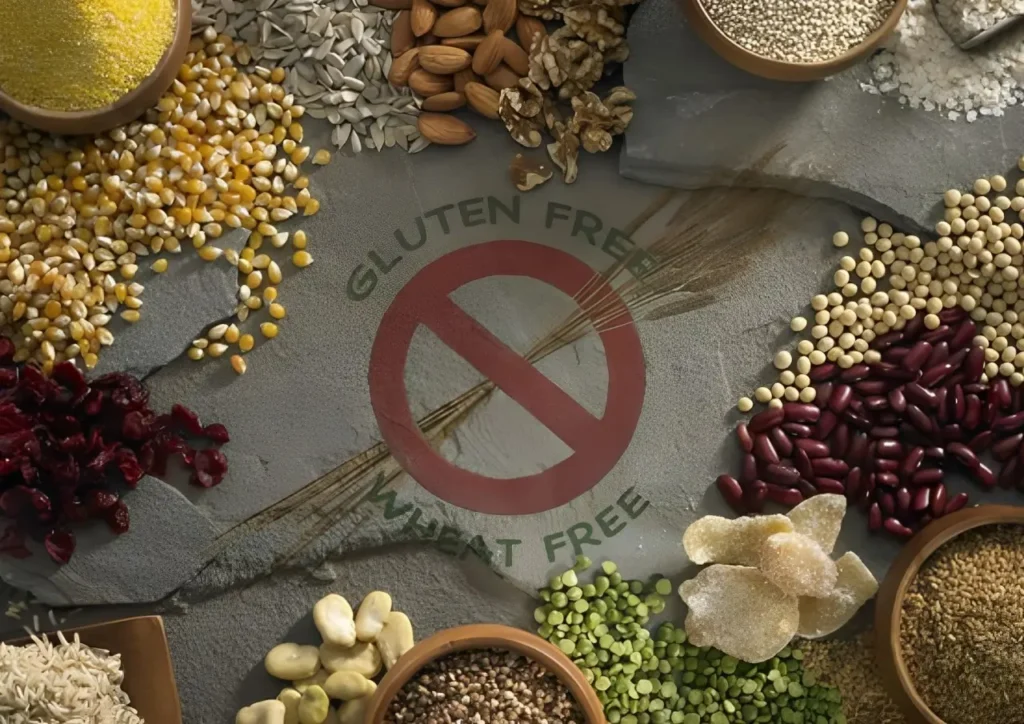Table of Contents
Food is essential to life, but for some, certain foods can cause uncomfortable reactions or serious health problems. If you’ve ever felt unwell after eating, or noticed recurring digestive issues or skin reactions after consuming specific foods, you might have wondered if it’s due to a food sensitivity or allergy. While these terms are often used interchangeably, they refer to two distinct conditions that affect the body in very different ways.
Understanding the difference between food sensitivities and allergies is crucial for proper diagnosis and treatment. In this blog, we’ll break down what food sensitivities and allergies are, their symptoms, causes, and how to manage them.
What Are Food Sensitivities?
Food sensitivities (also called food intolerances) occur when your body has difficulty digesting certain foods or when particular components of food cause discomfort. Unlike food allergies, food sensitivities do not trigger an immune system response. Instead, they typically affect the digestive system and are often dose-dependent—meaning the more of the offending food you consume, the worse the symptoms can get.
Common Causes of Food Sensitivities
- Lactose Intolerance: One of the most well-known sensitivities, lactose intolerance occurs when your body lacks the enzyme lactase, which is needed to digest lactose, the sugar found in milk and dairy products.
- Gluten Sensitivity: Non-celiac gluten sensitivity can cause bloating, headaches, and fatigue when gluten is consumed, though it’s not the same as celiac disease.
- Histamine Intolerance: Some people struggle to break down histamine in foods, leading to symptoms such as headaches, rashes, or digestive discomfort.
- Food Additives: Sensitivity to additives like sulfites, MSG, or artificial colorings can also trigger reactions, leading to headaches, digestive upset, or other symptoms.
Symptoms of Food Sensitivities
- Bloating and gas
- Diarrhea or constipation
- Stomach cramps
- Headaches or migraines
- Fatigue
- Irritability
Note: Food sensitivities are often less immediate than food allergies, with symptoms appearing a few hours to a few days after consumption.
What Are Food Allergies?
A food allergy involves the immune system mistakenly identifying a certain food as harmful and reacting to it by releasing chemicals like histamine, which can cause a wide range of symptoms, from mild to life-threatening. Food allergies typically affect the skin, respiratory system, and digestive system and can cause severe allergic reactions, such as anaphylaxis, which is a medical emergency.
Common Food Allergens
- Peanuts and Tree Nuts: Common among children and adults, peanut and tree nut allergies can be very serious.
- Shellfish: Shellfish like shrimp, crab, and lobster are major allergens, often causing severe reactions.
- Eggs and Dairy: Many children develop egg or dairy allergies, which they may outgrow, though some carry these into adulthood.
- Fish, Wheat, and Soy: These are other common allergens, particularly in children.
Symptoms of Food Allergies
- Hives, itching, or skin rash
- Swelling of the lips, tongue, or face
- Difficulty breathing, wheezing, or chest tightness
- Stomach pain, nausea, vomiting, or diarrhea
- Dizziness or fainting
- Anaphylaxis (severe, life-threatening allergic reaction)
Note: Food allergy reactions tend to happen very quickly, usually within minutes to a few hours after ingesting the allergen.
Food Sensitivities vs. Food Allergies: Key Differences
- Immune System Involvement: Food sensitivities do not involve the immune system, while food allergies trigger an immune response.
- Severity of Symptoms: Food allergies can cause life-threatening reactions like anaphylaxis, whereas food sensitivities typically cause discomfort but are not life-threatening.
- Onset of Symptoms: Symptoms of food allergies are usually immediate, while symptoms of food sensitivities can take longer to appear.
Diagnosis and Testing
Proper diagnosis is essential for managing both food sensitivities and allergies. Here’s how these conditions are typically diagnosed:
Diagnosing Food Sensitivities:
Diagnosing a food sensitivity can be more challenging because there’s no single test that provides definitive answers. A healthcare provider may recommend:
- Elimination Diet: Removing suspected trigger foods from your diet and slowly reintroducing them to identify the culprit.
- Food Diaries: Tracking what you eat and how you feel afterward can help pinpoint specific sensitivities.
Diagnosing Food Allergies:
Food allergies can often be diagnosed through:
- Skin Prick Test: A small amount of the suspected allergen is placed on your skin, which is then pricked to allow it to enter. If you’re allergic, a small bump will form.
- Blood Test: Blood tests can detect specific antibodies (IgE) that the body produces in response to an allergen.
- Oral Food Challenge: A doctor may administer a small amount of the food in a controlled environment to observe any reactions.
Note: Self-diagnosis or eliminating foods without proper testing can lead to unnecessary dietary restrictions or nutritional deficiencies. Always consult a healthcare professional if you suspect an allergy or sensitivity.
Managing Food Sensitivities and Allergies
Once you’ve identified your food sensitivity or allergy, managing it involves avoiding the trigger foods and learning how to handle potential reactions.
Managing Food Sensitivities:
- Moderation: Many people with food sensitivities can tolerate small amounts of the offending food. For example, someone with lactose intolerance may be able to consume lactose-free milk or take lactase enzyme supplements.
- Label Reading: Always check food labels for potential irritants like gluten or food additives.
- Finding Alternatives: There are many alternatives available, such as dairy-free milk or gluten-free bread, to help you maintain a balanced diet without triggering symptoms.
Managing Food Allergies:
- Avoidance: Strict avoidance of the allergen is crucial. Even small amounts of the offending food can cause severe reactions.
- Carrying an EpiPen: People with severe allergies, especially those at risk of anaphylaxis, should carry an epinephrine auto-injector (EpiPen) at all times.
- Reading Labels: Be diligent about reading food labels for allergens, especially when eating processed foods or dining out.
Living with Food Sensitivities and Allergies
Living with food sensitivities or allergies requires some adjustments, but it doesn’t mean giving up your favorite foods entirely. Here are a few tips for making it easier:
- Plan Ahead: If you’re going to a restaurant or event, check the menu in advance or contact the venue to inquire about allergen-friendly options.
- Educate Friends and Family: Let those around you know about your food sensitivities or allergies, so they can help you avoid risky foods.
- Stay Informed: Keep up with new products, recipes, and research to help manage your condition better.
Conclusion
Understanding the difference between food sensitivities and allergies is essential for taking control of your health and well-being. Whether you’re dealing with digestive discomfort after a meal or serious allergic reactions, proper diagnosis and management can help you live a healthy, balanced life. Always consult with a healthcare provider to identify and address any food-related concerns. With the right knowledge and tools, you can navigate the world of food sensitivities and allergies with confidence.






